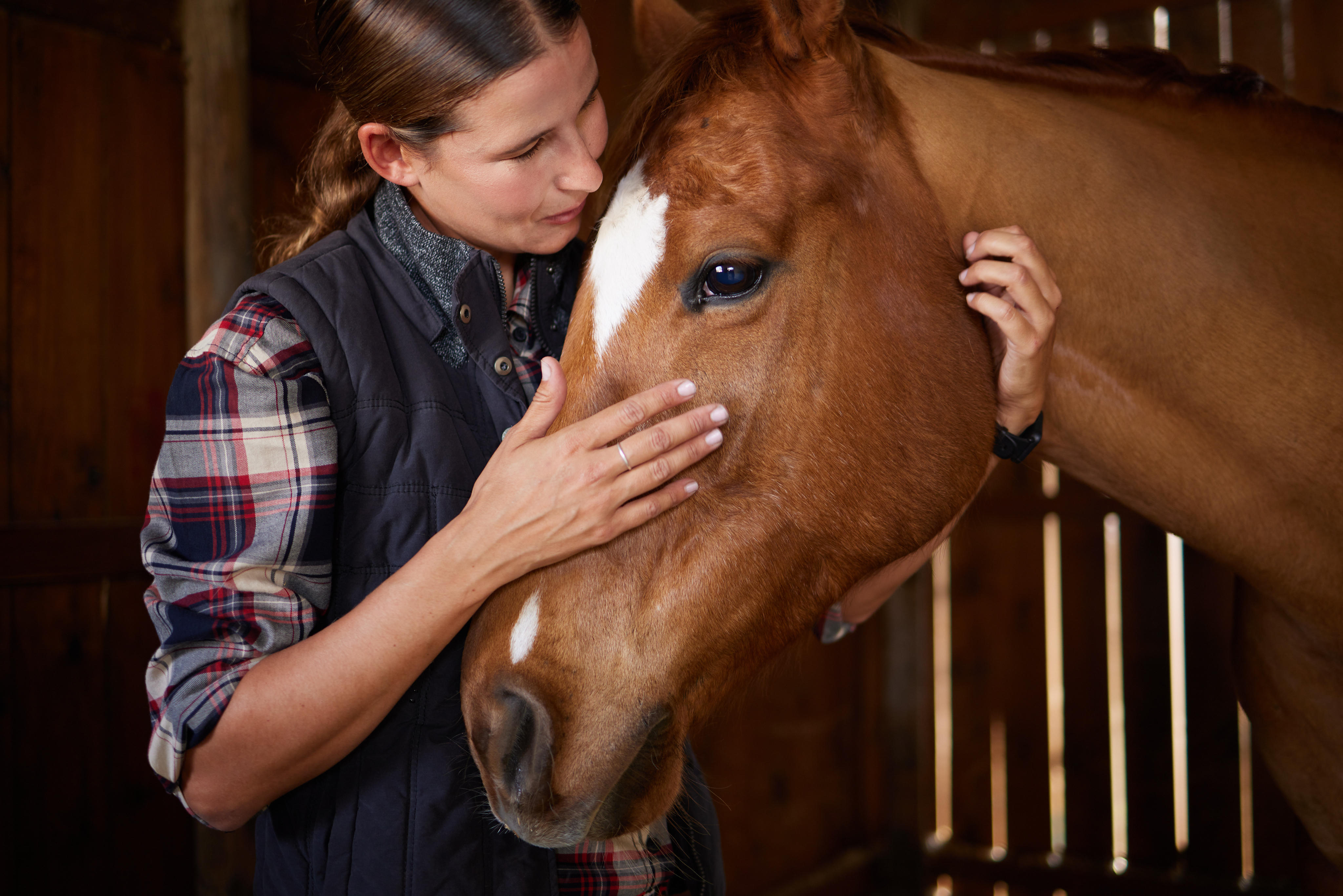BRAVECTO® Clinical Studies
Published Clinical Studies
View and download recent clinical studies to stay up-to-date and educated on the proven difference of BRAVECTO.
Water immersion of dogs close to the time of topical fluralaner treatment does not reduce efficacy against a subsequent experimental challenge with Rhipicephalus sanguineus (sensu lato)
Abstract Background: Fluralaner is a novel systemic ectoparasiticide for dogs and cats providing immediate and persistent flea- and tick-control after a single topical dose. Prescribing directions recommend waiting 72 h following topical administration before immersing dogs in water. The objective of this study was to determine whether water immersion immediately prior to treatment or earlier than 72 h post-treatment reduced subsequent treatment efficacy. Methods: Forty (n = 40) dogs were blocked on tick carrying capacity into 5 experimental groups and all but one of the groups (untreated control) were treated topically with fluralaner (Bravecto® Spot-On Solution, Merck Animal Health, Madison, NJ, USA) at the commercial dose. Three of the four remaining groups were immersed in 38–40 °C water for a 5 min bath – either 1 h before treatment; 12 h after treatment; or 24 h after treatment. Seven days after treatment all dogs were challenged with 50 Rhipicephalus sanguineus (sensu lato) ticks and after 24 h attached ticks were counted and removed. Results: Efficacies (compared to the untreated control group) were: 99.3% for no water immersion; 99.6% for immersion 1 h before treatment; 99.3% for immersion 12 h after treatment; and 100% for immersion 24 h after treatment. Conclusions: Water immersion of dogs around the time of topical fluralaner administration did not reduce subsequent systemic acaricidal efficacy. Keywords: Bathing, Bravecto, Dog, Fluralaner, Rhipacephalus sanguineus, Water Read more about this study here
The speed of kill of fluralaner (BRAVECTO™) against Ixodes ricinus ticks on dogs
Abstract Background: Pathogens that are transmitted by ticks to dogs, such as Anaplasma phagocytophilum, Babesia spp., Borrelia burgdorferi sensu latu, and Ehrlichia canis, are an increasing problem in the world. One method to prevent pathogen transmission to dogs is to kill the ticks before transmission occurs. Fluralaner (Bravecto™) is a novel isoxazoline insecticide and acaricide that provides long persistent antiparasitic activity following systemic administration. This study investigated the speed of kill of fluralaner against Ixodes ricinus ticks on dogs. Methods: A total of 48 dogs were randomized to 8 groups of 6 dogs and each dog was infested with 50 female and 10 male I. ricinus ticks. Two days later (day 0), 4 groups received a single treatment of 25 mg fluralaner/kg body weight as Bravecto™ chewable tablets; the dogs in the other 4 groups were left untreated. Separate control and treatment groups were paired at each time point (4, 8, 12, or 24 hours after treatment) for assessment of tick-killing efficacy. At 4, 8, and 12 weeks after treatment, all dogs were re-infested with 50 female I. ricinus ticks and subsequently assessed for live or dead ticks at either 4, 8, 12, or 24 hours after re-infestation. Efficacy was calculated for each assessment time point by comparison of the treatment group with the respective control group. Results: Tick-killing efficacy was 89.6% at 4 hours, 97.9% at 8 hours, and 100% at 12 and 24 hours after treatment. Eight hours after re-infestation, efficacy was 96.8%, 83.5%, and 45.8% at 4, 8, and 12 weeks after treatment, respectively. At least 98.1% tick-killing efficacy was demonstrated 12 and 24 hours after re-infestation over the entire 12 week study period. Conclusions: Fluralaner kills ticks rapidly after treatment at 4 hours, and over its entire 12-week period of efficacy, it achieves an almost complete killing effect within 12 hours after tick infestation. The rapid tick-killing effect together with the long duration of efficacy enables fluralaner to aid in the prevention of tick borne diseases. Keywords: Bravecto chewable tablets, Fluralaner, Speed of kill, Dog, Tick, Ixodes ricinus, Tick-borne diseases, Efficacy Read more about this study here
The effect of water and shampooing on the efficacy of fluralaner spot-on solution against Ixodes ricinus and Ctenocephalides felis infestations in dogs
Abstract Background: Fluralaner spot-on solution provides immediate and persistent efficacy against tick and flea infestations in dogs and cats for 12-weeks following topical administration. The active ingredient fluralaner is distributed systemically following transdermal absorption. Therefore, this study tested the hypothesis whether water-immersion or shampooing of dogs following administration of fluralaner spot-on solution has an impact on subsequent tick and flea efficacy. Methods: Thirty-two Beagle dogs were allocated to four study groups of 8 dogs each. On day 0, dogs in the 2 treatment groups received topical administration of fluralaner (Bravecto™ spot-on solution) according to label instructions. Dogs in the 2 corresponding control groups remained untreated. On days 3, 21, 49, and 77 dogs in one treatment group and control group were water-immersed for 2–5 min, while dogs in the other treatment group and control group were shampooed 6–8 min with a commercial foaming micro-emulsion, unscented product. On days 4, 28, 56, and 84 all dogs were co-infested with 50 ± 2 female and 10 ± 2 male Ixodes ricinus and 100 ± 4 Ctenocephalides felis, with tick and flea removal and counts 48 ± 2 h post-infestation. Efficacy against ticks and fleas was calculated for each assessment time point. Results: No treatment-related adverse event was observed in any of the 16 dogs treated with fluralaner spot-on solution during the study. Efficacy against ticks at each assessment time point was between 99.7 and 100 % in the water-immersed group and between 99.2 and 100 % in the shampooed group. Efficacy against fleas was 100 % at each assessment time point as well in the water-immersed as the shampooed group. Tick and flea reduction in both treatment groups was significant at all assessment time points (p < 0.0001). Conclusions: Neither water-immersion nor shampooing after single topical administration of fluralaner spot-on solution had an impact on the excellent tick and flea efficacy over the 12-week recommended re-treatment interval. Keywords: Bathing, Bravecto Spot-on Solution, Fluralaner, Dog, Flea, Ctenocephalides felis, Efficacy, Water-immersion, Shampooing, Tick, Ixodes rinicus Read more about this study here
The effect of food on the pharmacokinetics on oral fluralaner in dogs
Abstract Background: Fluralaner is a novel systemic ectoparasiticide for dogs providing long-acting flea- and tick-control after a single oral dose. The pharmacokinetics of orally administered drugs may be influenced by feeding. This study investigated the influence of concurrent feeding on fluralaner pharmacokinetics. Methods: Twelve fasted or fed beagles received a single oral administration of 25 mg fluralaner/kg body weight in a chewable tablet. Plasma samples were collected at multiple post-treatment time points for fluralaner concentration analysis. Clinical observations were performed on all dogs at regular intervals throughout the study. Results: Fluralaner was readily absorbed in fasted and fed dogs administered at a dose of 25 mg/kg BW with a similar mean tmax for both groups. In fed dogs, AUC and Cmax were increased compared to fasted dogs by a factor of 2.5 and 2.1 respectively. The difference in AUC and Cmax between the fed and fasted groups was statistically significant. No adverse events were observed following oral fluralaner administration to fasted and fed dogs. Conclusions: Fluralaner is absorbed to a considerable extent in fasted and fed dogs. Administration of fluralaner chewable tablets with food significantly increases bioavailability. Keywords: Fluralaner, Dog, Pharmacokinetics, Food effect, Fasted Read more about this study here
Systemically and cutaneously distributed ectoparasiticides: a review of the efficacy against ticks and fleas on dogs
Abstract Acaricidal (tick) and insecticidal (flea) efficacy of systemically and cutaneously distributed ectoparasiticide products for dogs are compared based on permethrin and fluralaner as representative molecules. Results of efficacy studies against fleas and ticks are reviewed that show generally good to excellent results. Both externally and systemically distributed treatments have benefits and weaknesses in potentially preventing pathogen transmission by these arthropod vectors. Four general properties are considered related to the goal of providing optimal reduction in the risk of vector-borne pathogen transmission. These are: Owner adherence to the recommended treatment protocol; Rapid onset of activity following administration; Uniform efficacy over all areas of the treated dog at risk for parasite attachment; Maintenance of high efficacy throughout the retreatment interval. In considering these four factors, a systemically distributed acaricide can offer an option that is at least as effective as a cutaneously administered acaricide with regard to the overall goal of reducing the risk of vector-borne pathogen transmission. Keywords: Ectoparasiticide, Acaricide, Insecticide, Permethrin, Fluralaner, Dog Read more about this study here
Safety of topical administration of fluralaner plus moxidectin concurrently with praziquantel in cats
Abstract Background: Fluralaner provides efficacy against feline ectoparasites following topical administration. Moxidectin is routinely used to treat gastrointestinal nematode infections and prevent heartworm disease caused by Dirofilaria immitis. Praziquantel is routinely used to treat feline tapeworm infections. The safety of a fluralaner plus moxidectin combination topical solution (Bravecto™ Plus, MSD Animal Health) was assessed when administered concurrently with a commercially available praziquantel topical solution (Droncit™ Spot-on, Bayer Animal Health GmbH). The highest dose rates in clinical use were tested. Results: Concurrent topical administration of a fluralaner plus moxidectin and a praziquantel product did not result in adverse findings. One out of ten cats receiving praziquantel only (control group), and two out of ten cats receiving fluralaner plus moxidectin and praziquantel (treatment group) had dandruff-like flakes in their coat at the application site. Two out of the ten control cats and three cats out of the ten treatment group cats had very small amounts of unidentified material (minute crusts or crumbs) at the application site which was only visible during close inspection. Conclusions: The concurrent treatment of cats with fluralaner plus moxidectin and praziquantel at the maximum dose in clinical use was well tolerated. Keywords: Cat, Fluralaner, Moxidectin, Bravecto Plus, Praziquantel, Droncit™, Safety Read more about this study here
Safety of the concurrent treatment of dogs with Bravecto™ (fluralaner) and Scalibor™ protectorband (deltamethrin)
Abstract Background: Bravecto™ (fluralaner; MSD Animal Health) is a novel systemic ectoparasiticide for dogs providing long-acting flea- and tick-control after a single oral dose. Scalibor™ Protectorband (deltamethrin; MSD Animal Health) is a collar often used to reduce sandfly feeding for leishmaniasis prevention. This study investigated the safety of the concurrent use of Bravecto™ and Scalibor™ Protectorband at the recommended dosage regimens. Findings: Throughout the study period of 24 weeks, there were no clinical findings related to the concurrent treatment with Bravecto™ in dogs fitted with Scalibor™ Protectorband at the recommended dosage regimen. Conclusions: Concurrent treatment with Bravecto™ in dogs fitted with Scalibor™ Protectorband is well tolerated. Keywords: Bravecto, Fluralaner, Dog, Safety, Scalibor™, Deltamethrin Read more about this study here
Safety of fluralaner chewable tablets (Bravecto™), a novel systemic antiparasitic drug, in dogs after oral administration
Abstract Background: Fluralaner is a novel systemic insecticide and acaricide that provides long acting efficacy in dogs after a single oral treatment. This study investigated the safety of oral administration of fluralaner in chewable tablets to dogs at the highest recommended treatment dose and at multiples of this dose. Methods: Thirty-two (16 male and 16 female) healthy 8-week old Beagle dogs weighing 2.0 – 3.6 kg at first administration were included in the study. Fluralaner was administered on three occasions at 8-week intervals at doses of up to 56, 168, and 280 mg fluralaner/kg body weight, equivalent to 1, 3, and 5 times the highest recommended treatment dose of fluralaner; sham dosed dogs served as controls. During the study, all dogs were clinically observed, and their health was carefully monitored including body weight development, food consumption and measurement of hematology, coagulation, clinical chemistry (including measurement of levels of ACTH and C-reactive protein) and urinalysis. Following euthanasia of the dogs, complete gross post mortem examination, including organ weight determination, and histopathological examination of multiple tissues were conducted. Results: There were no clinical findings related to fluralaner treatment. Statistically significant differences between the treated groups and the control group were observed for some clinical pathology parameters and organ weights; none of these findings were considered to be of clinical relevance. Conclusions: Oral administration of fluralaner at the highest recommended treatment dose (56 mg/kg) at 8-week intervals is well tolerated and has a safety margin of more than five in healthy dogs eight weeks of age or older and weighing at least 2 kg. Keywords: Fluralaner, Dog, Safety, Bravecto Read more about this study here
Safety of fluralaner a novel systemic antiparasitic drug in mdr1 collies after oral administration
Abstract Background: Fluralaner is a novel systemic ectoparasiticide for dogs providing long-acting flea- and tick-control after a single oral dose. This study investigated the safety of oral administration of fluralaner at 3 times the highest expected clinical dose to Multi Drug Resistance Protein 1 (MDR1(-/-)) gene defect Collies. Methods: Sixteen Collies homozygous for the MDR1 deletion mutation were included in the study. Eight Collies received fluralaner chewable tablets once at a dose of 168 mg/kg; eight sham dosed Collies served as controls. All Collies were clinically observed until 28 days following treatment. Results: No adverse events were observed subsequent to fluralaner treatment of MDR1(-/-) Collies at three times the highest expected clinical dose. Conclusions: Fluralaner chewable tablets are well tolerated in MDR1(-/-) Collies following oral administration. Keywords: Fluralaner, Bravecto, Dog, Safety, MDR1 Read more about this study here
Contact Us About the 12-Week* Difference
Contact us for more information about BRAVECTO for your clinic. We’ll answer any questions and help you start prescribing BRAVECTO for the dogs and cats in your care.
CONTACT USFor technical assistance or to report a suspected adverse drug reaction, contact Merck Animal Health at 1-800-224-5318.
This site is intended for veterinary professionals. Visit our website for pet owners.
*BRAVECTO kills fleas and prevents flea infestations. BRAVECTO (fluralaner) Chews for Dogs kills ticks (black-legged tick, American dog tick, brown dog tick, and Asian longhorned tick) for 12 weeks. BRAVECTO Chews also kills lone star ticks for 8 weeks. BRAVECTO (fluralaner topical solution) for Dogs kills ticks (black-legged tick, American dog tick, and brown dog tick) for 12 weeks and also kills lone star ticks for 8 weeks. BRAVECTO (fluralaner topical solution) for Cats kills ticks (black-legged tick and Asian longhorned tick) for 12 weeks and American dog ticks for 8 weeks.
Important Safety Information
BRAVECTO (fluralaner) Chews for Dogs: The most commonly reported adverse reactions include vomiting, lethargy, diarrhea, anorexia and pruritus. In some cases, adverse events have been reported following use in breeding females. BRAVECTO (fluralaner topical solution) for Dogs: The most commonly reported adverse reactions include vomiting, hair loss, diarrhea, lethargy, decreased appetite, and moist dermatitis/rash.
BRAVECTO Chews and Topical Solution for Dogs have not been shown to be effective for 12-weeks’ duration in puppies less than 6 months of age. BRAVECTO Chews and Topical Solution for Dogs are not effective against the lone star tick beyond 8 weeks of dosing. BRAVECTO Topical Solution for Dogs is for topical use only. Avoid oral ingestion.
BRAVECTO (fluralaner topical solution) for Cats: The most commonly reported adverse reactions include vomiting, itching, diarrhea, hair loss, decreased appetite, lethargy, and scabs/ulcerated lesions. BRAVECTO Topical Solution for Cats is not effective against American dog ticks beyond 8 weeks of dosing. BRAVECTO PLUS (fluralaner and moxidectin topical solution) for Cats: The most commonly reported adverse reactions include vomiting, hair loss, itching, diarrhea, lethargy, dry skin, elevated ALT, and hypersalivation. BRAVECTO PLUS has not been shown to be effective for 2 months in kittens less than 6 months of age. Use with caution in cats that are heartworm positive. The effectiveness of BRAVECTO PLUS to prevent heartworm disease after bathing or water immersion has not been evaluated.
BRAVECTO Topical Solution for Cats has not been shown to be effective for 12-weeks’ duration in puppies or kittens less than 6 months of age. BRAVECTO Topical Solution for Cats and BRAVECTO PLUS for Cats are for topical use only. Avoid oral ingestion. The safety of BRAVECTO Topical Solution for Cats and BRAVECTO PLUS has not been established in breeding, pregnant and lactating cats.
All BRAVECTO products contain fluralaner, which is a member of the isoxazoline class. This class has been associated with neurologic adverse reactions including tremors, ataxia, and seizures. Seizures have been reported in dogs receiving isoxazoline class drugs, even in dogs without a history of seizures. Use with caution in dogs with a history of seizures or neurologic disorders. Neurologic adverse reactions have been reported in cats receiving isoxazoline class drugs, even in cats without a history of neurologic disorders. Use with caution in cats with a history of neurologic disorders.




 Go To United States
Go To United States Algeria
Algeria Argentina
Argentina Australia
Australia Austria
Austria Bahrain
Bahrain Belgium (Dutch)
Belgium (Dutch) Brazil
Brazil Canada (English)
Canada (English) Chile
Chile Colombia
Colombia Croatia
Croatia Czech Republic
Czech Republic Denmark
Denmark Ecuador
Ecuador Egypt
Egypt Finland
Finland France
France Germany
Germany Greece
Greece Hungary
Hungary India
India Indonesia
Indonesia Iraq
Iraq Ireland
Ireland Israel
Israel Italy
Italy Japan
Japan Jordan
Jordan Kuwait
Kuwait Lebanon
Lebanon Malaysia
Malaysia Mexico
Mexico Morocco
Morocco Netherlands
Netherlands New Zealand
New Zealand Norway
Norway Oman
Oman Panama
Panama Peru
Peru Philippines
Philippines Poland
Poland Portugal
Portugal Qatar
Qatar Romania
Romania Russian Federation
Russian Federation Saudi Arabia
Saudi Arabia South Africa
South Africa South Korea
South Korea Spain
Spain Sweden
Sweden Switzerland (French)
Switzerland (French) Taiwan
Taiwan Thailand
Thailand Tunisia
Tunisia Turkey
Turkey Ukraine
Ukraine United Arab Emirates
United Arab Emirates United Kingdom
United Kingdom Uruguay
Uruguay Yemen
Yemen Global
Global